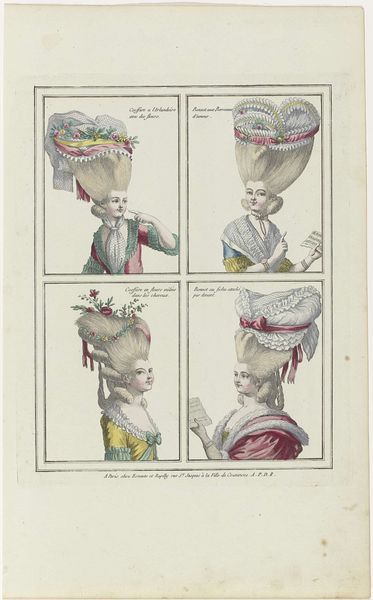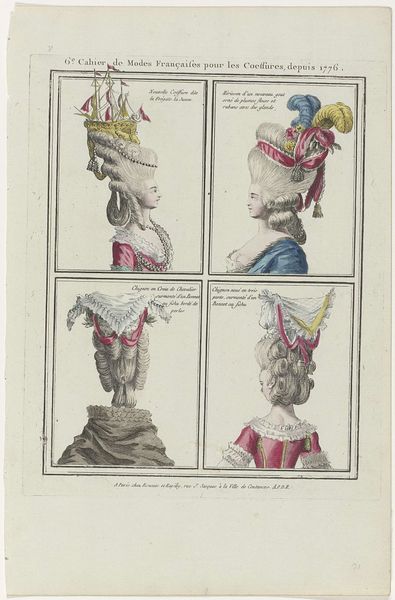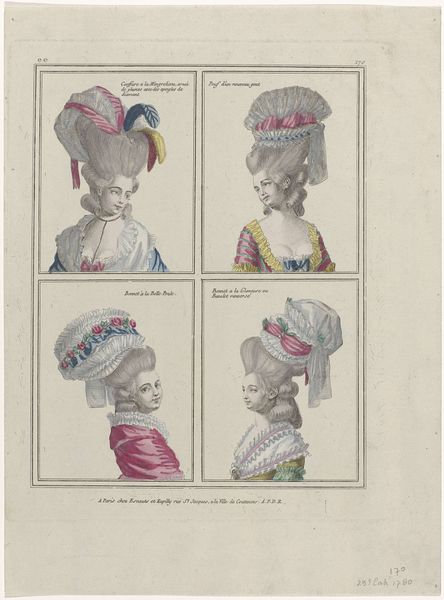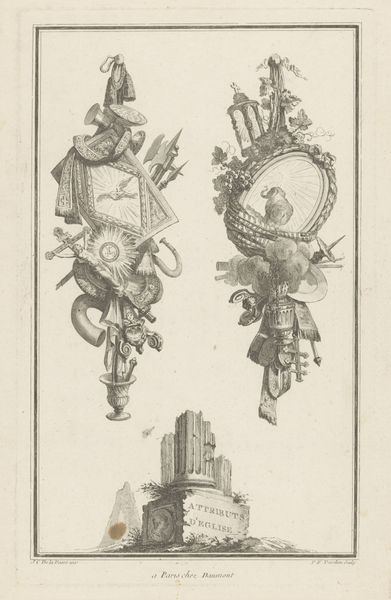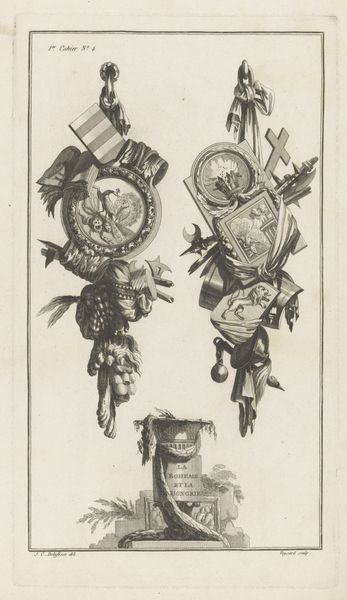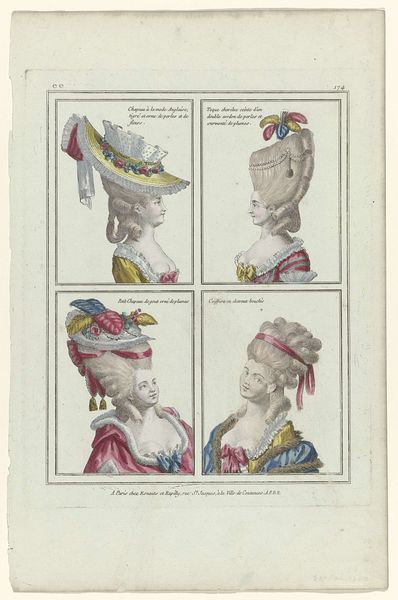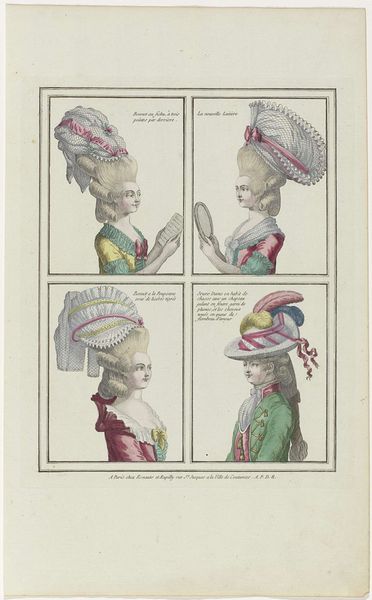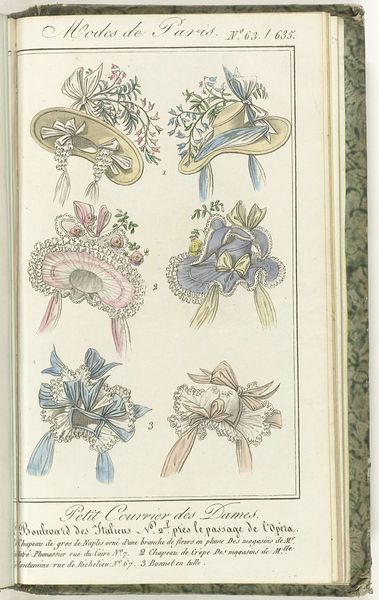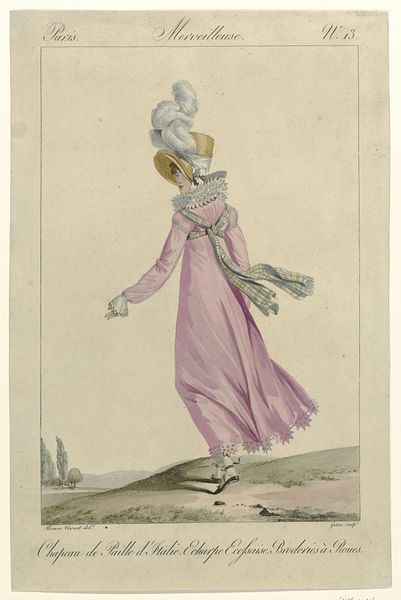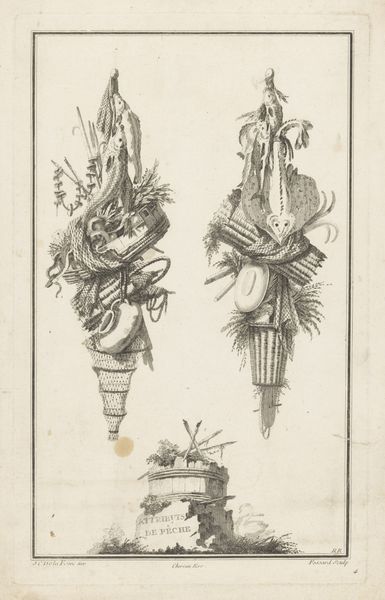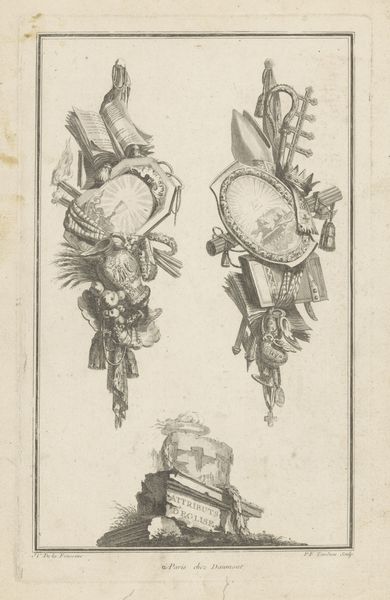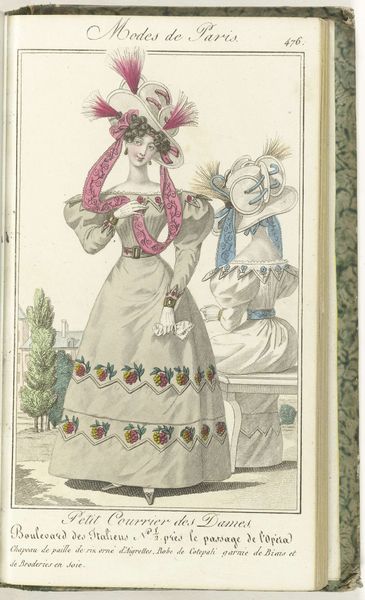
Dimensions: height 275 mm, width 222 mm
Copyright: Rijks Museum: Open Domain
Editor: Here we have “Coiffures, Poufs, Hats and Bonnets: Eleven Coiffures and Headdresses,” an engraving with watercolor from 1776, by an anonymous artist. The scale is relatively small, like a fashion plate. All that hair! What strikes you about this piece? Curator: The sheer volume of labor embedded in this image is striking. Consider the sourcing of materials for these elaborate coiffures – the hair itself, likely supplemented with horsehair or wool, the fabrics, the feathers, the jewels. And then the skill required to assemble these materials into such extravagant displays. This image is a document of intense material consumption and artisanal production. Editor: So, it's not just about the aesthetic of the Rococo period but also about the actual making and the societal implications? Curator: Exactly. Who had access to these materials and skills? Who was excluded? Think about the social context. France, on the eve of revolution. This isn't simply decorative art, it is also indicative of class division, and the concentration of resources. And let’s not forget the political statements some of these coiffures made – the ‘coiffure à la Belle Poule’ celebrating a naval victory for example. How might the consumption of this print be connected to actual displays of wealth and power in the streets? Editor: That’s fascinating. I never considered the labor aspect before; I only focused on the final look. The engraving now feels less frivolous. Curator: The image itself is a product, consumed, circulated, and further influencing material culture. The lines of production and consumption are intricately entwined. Hopefully, looking closely helps reveal more about this historical moment and material processes.
Comments
rijksmuseum about 2 years ago
⋮
Ladies’ hairstyles were ingenious works of art, built around a core of cushions and horsehair. Hair was piled high in curls and twists (chignons) and adorned with feathers, ribbons, artificial flowers, tulle and jewels to create various fancifully named poufs. Because the hair was dressed using animal fat and powdered with wheat flour, these poufs attracted all manner of insects. Far from hygienic, they moreover did not last long. When they went out, ladies protected their hairdos with a voluminous ribbed hood called a calèche 1. Hairdressers of the time, who styled themselves as artists, used prints to advertise their latest creations and craftsmanship 2 3.
Join the conversation
Join millions of artists and users on Artera today and experience the ultimate creative platform.
